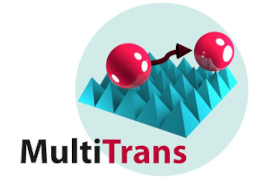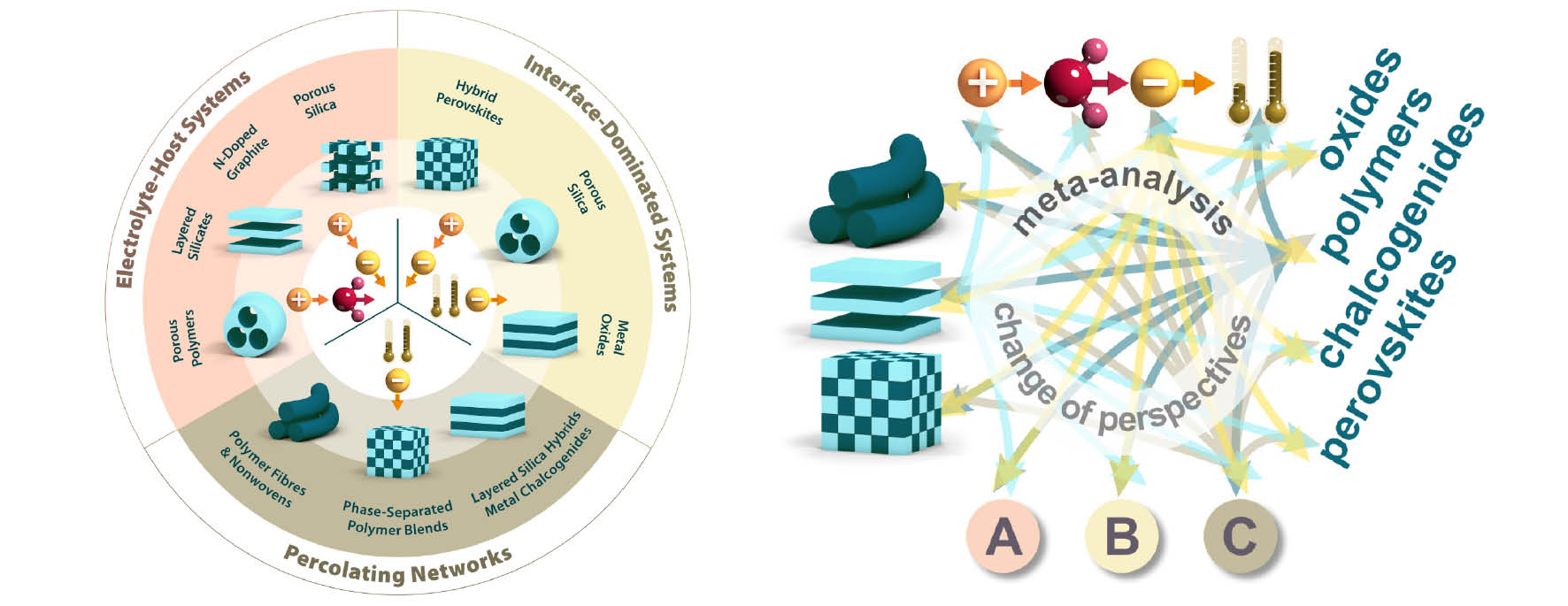Project Areas
Elucidating the transport of multiple carrier types in nanostructured materials is a challenging task. We conceived 15 projects, each with an ambitious work programme that includes complementary model materials, characterisation methods, and theoretical descriptions to contribute to the overarching CRC research goal. These projects naturally group into three research areas. They pose major questions to the interplay of confinement and transport, which we consider as particularly promising and relevant for the first funding phase.
(A) Electrolyte-host systems unite the transport of mainly ions and molecules as they occur in electrochemical functional units such as fuel cells or batteries. The common confinement in this theme are open spaces of the host that impose a strong interaction between the carrier types and the surrounding matrix. Here, all projects focus on the development and characterisation of model materials with pores of distinct size, shape, and surface functionalisation that control the flow of molecules and ions that adsorb inside the porous host.
(B) Interface-dominated systems are dedicated to the transport of predominantly electrons and ions as they occur in solar cells, light-emitting diodes, photocatalysis, or batteries. These model materials have in common that the charge transport is significantly influenced by the transfer across heterogenous interfaces, for which distinct model systems will be developed.
(C) Percolating networks combine aspects of themes A and B as the long-range transport will be governed by the interplay of transport along confined structures and through the transfer of contacting objects. The projects will examine the transport of heat and electrons through network structures comprising distinct dimension-alities and material combinations that are suitable to direct the flow of predominantly these two carrier types.
The projects are strongly interwoven on several layers. We highlight four layers, along which the research of the individual projects can be categorised: 1) contribution to a project area; 2) material type and thus the interaction with the carrier types, 3) structure and dimension of the confinement; and 4) carrier type combination. These four layers give us the unique advantage to evaluate the results of the individual projects from different perspectives, which we correspond to a ‘meta-analysis’. This meta-analysis is an essential contribution to the development of a fundamental and overarching understanding of the complex transport phenomena, and to develop concepts to link, separate, or orthogonalise the various carrier types It requires a substantial basis of structured materials and methods, as well as a concerted and focused research effort, which both are provided by the CRC.


